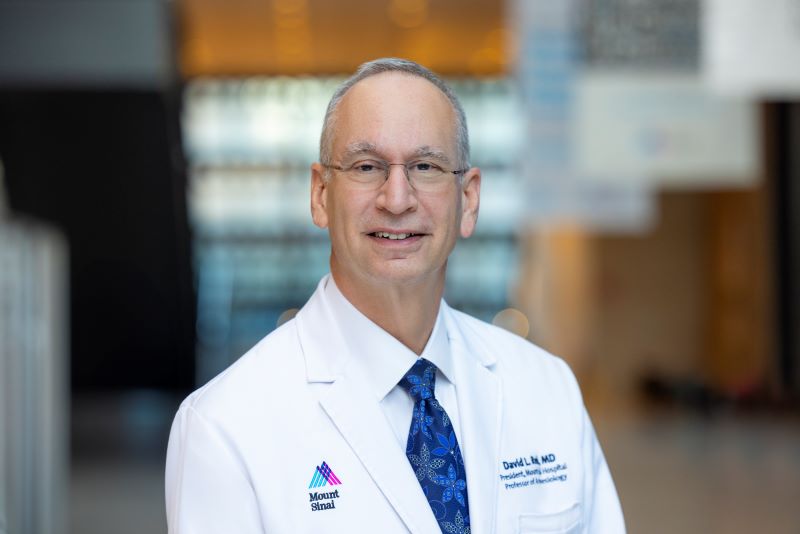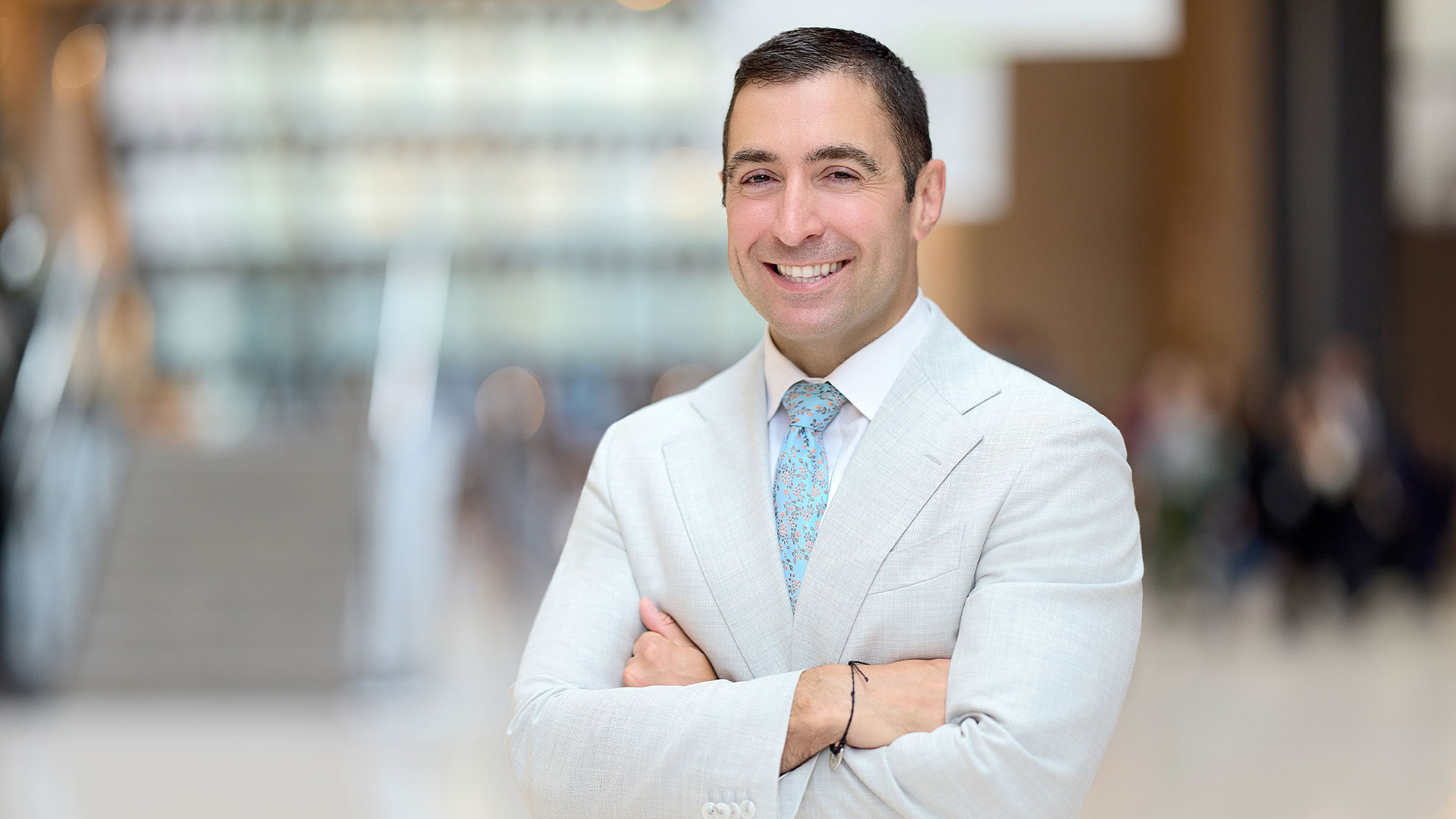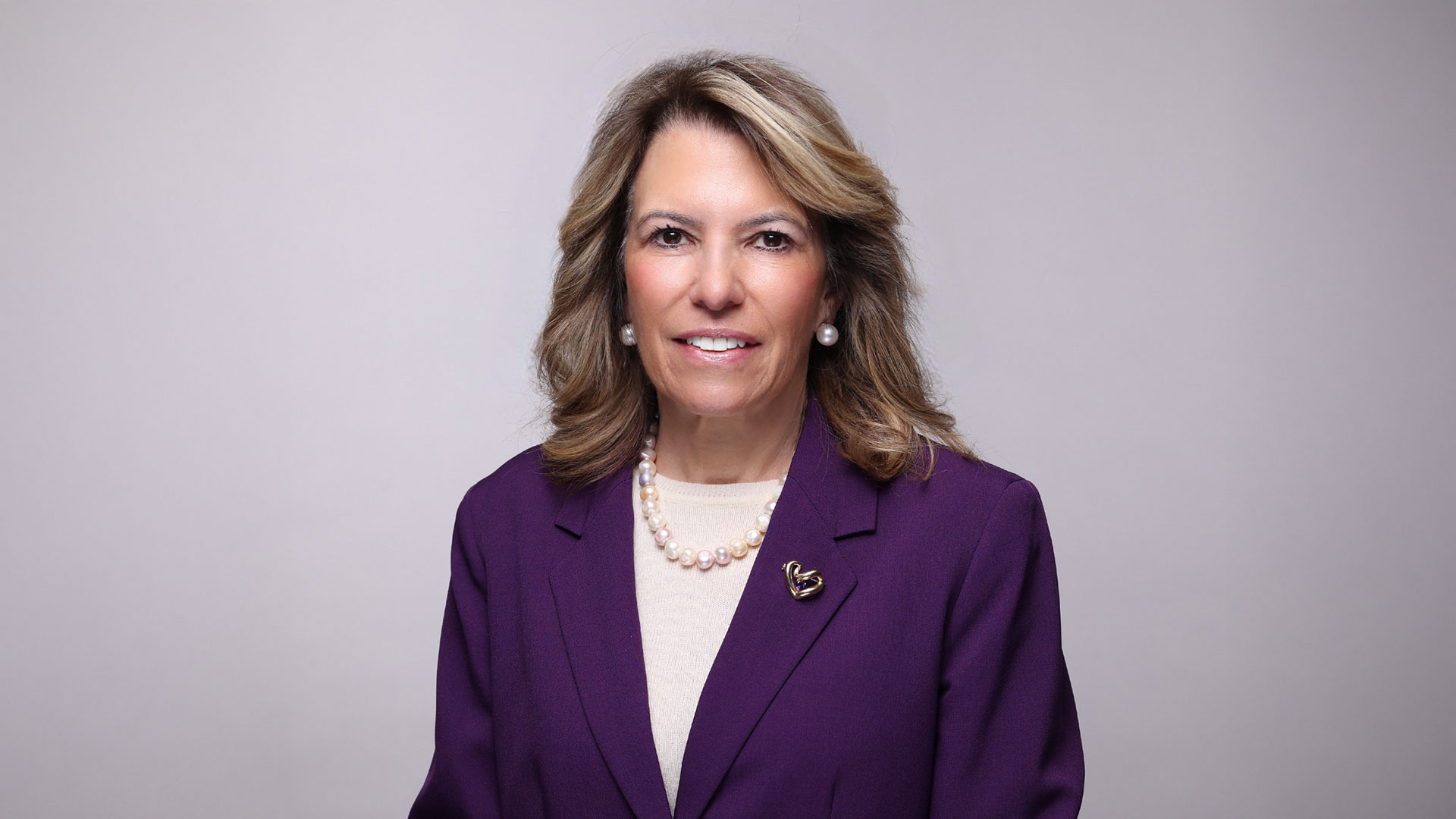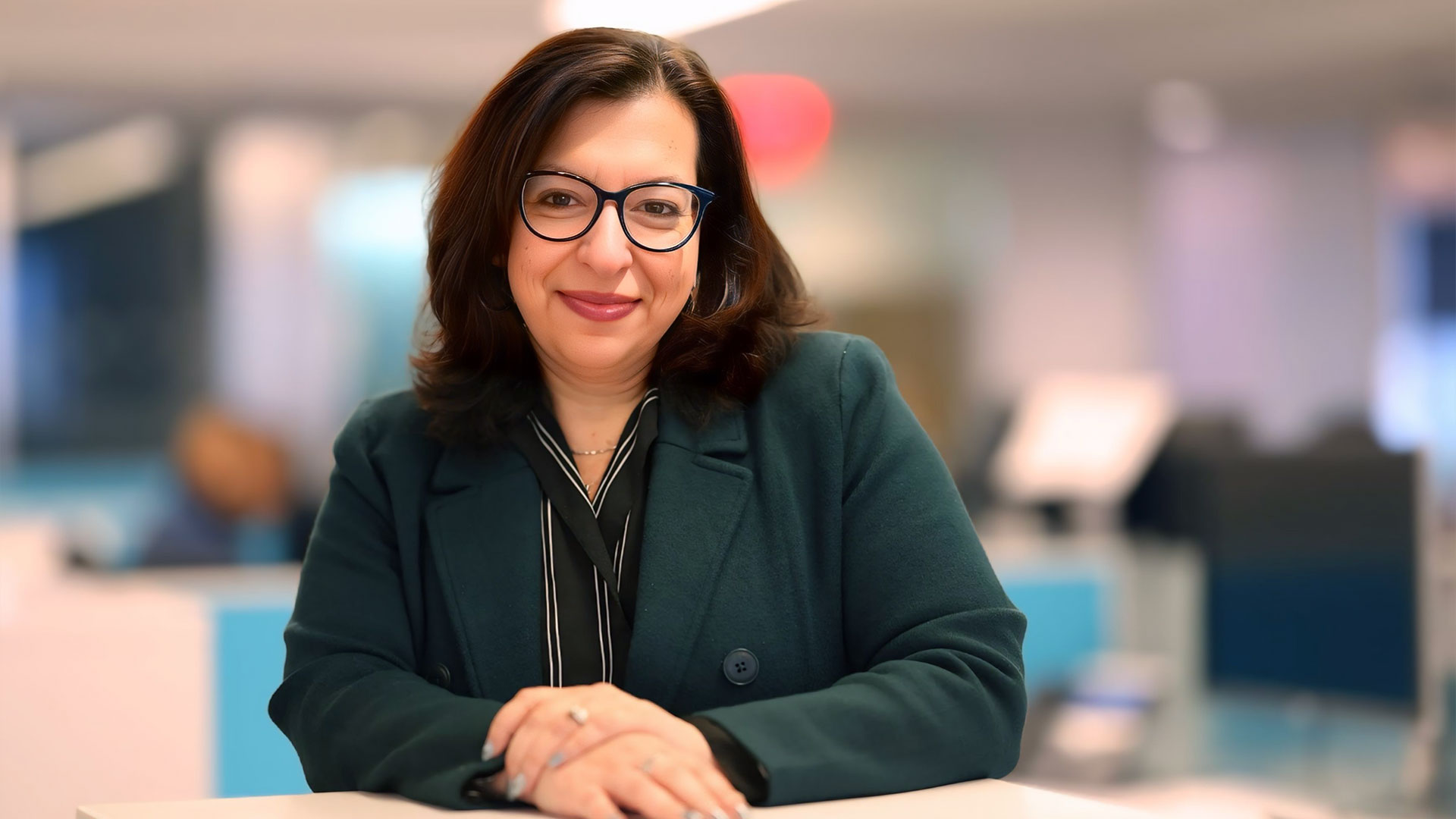Even before patients are admitted to The Mount Sinai Hospital, an AI-enhanced algorithm alerts nurses to those most likely to develop bedsores, a costly and painful problem. Another AI model identifies patients in the hospital who are at high risk for delirium and alerts specially trained teams to assess them.
Meanwhile, patients can use an AI-powered symptom checker to help them decide the best setting to receive care. They can talk with Ava, a voice-based AI system built into the scheduling phone lines that answers questions at any hour of the night in a manner some actually find comforting. And an automated AI program follows up with insurance companies if claims are denied. Many other AI-driven systems operate in the background, helping doctors review medical images, transcribing notes, and ensuring patients get the best care.
At the same time, teams of Mount Sinai clinicians and researchers are evaluating dozens of new AI-powered tools to aid providers in a wide range of challenging tasks: monitoring blood sugar levels in patients recovering from heart surgery; evaluating the best cancer treatments; prioritizing interventions for those most likely to have a heart attack; studying sleep apnea; and tracking an infant’s tiniest movements in the neonatal intensive care unit—subtle twitches that could mean a possible neurological abnormality.
In research, Mount Sinai has launched the AI Small Molecule Drug Discovery Center, a bold endeavor to revolutionize drug development, and the Center for Artificial Intelligence in Children’s Health, a pioneering initiative to improve health care outcomes for children. And students at the Icahn School of Medicine at Mount Sinai are now using ChatGPT Edu to support their scientific research, academic study, and clinical judgment.
As the health care landscape rapidly evolves, Mount Sinai is at the forefront of this revolution, leveraging AI to help physicians and scientists deliver better, more informed care. From diagnostics to drug development and new care models, AI is fundamentally transforming health care for patients, providers, researchers, educators, students, and employees across the Health System.
“At Mount Sinai, we’ve come to understand the importance of AI as a foundational change in the world,” says Brendan G. Carr, MD, MA, MS, Chief Executive Officer and Professor and Kenneth L. Davis, MD, Distinguished Chair, Mount Sinai Health System. “This is the invention of fire. This is the ability to transform health care in a million different ways.”
Watch this video to see what differentiates Mount Sinai in its approach to artificial intelligence and how AI is helping to revolutionize health care, touching virtually every patient visit.
The challenge is to view AI as not just a tool, but also a partner—one being carefully trained and monitored as it helps advance health care delivery and empowers Mount Sinai as a model learning health system. The goal is to integrate data, research, and clinical care to continuously improve patient outcomes and bring forward innovative ideas from employees at all levels and in all roles.
While still early in the process, Mount Sinai’s comprehensive approach has already earned the Health System recognition and accolades. The Nature Index, a database from the prestigious scientific publishing company that provides metrics of high-quality research and collaboration, ranked Mount Sinai Health System No. 1 on its list of “Leading 10 Healthcare Institutions.” In addition, The Mount Sinai Hospital was No. 5 in the “World’s Best Smart Hospitals 2026” rankings released by Newsweek/Statista, up from No. 6 the year before.
Further significant gains are not likely to come easily, however, as there are many technical and ethical issues to address.
“The existence of AI in itself is not going to give us wins. We have to earn them,” says Alexander Charney, MD, PhD, Director of The Charles Bronfman Institute for Personalized Medicine at Mount Sinai, and Vice Chair of the Windreich Department of Artificial Intelligence and Human Health at the Icahn School of Medicine, the first of its kind at a U.S. medical school. “We have to be bold. We have to be strategic. And we have to be brave.”
Collaborating closely with internal and external digital and technology partners, Mount Sinai is positioned to do just that—and changes are already being felt in virtually every area of the Health System even while the organization ensures proper safeguards are in place.
Girish Nadkarni, MD, MPH, CPH

“We must ensure that the things we put into clinical care—whether developed internally at Mount Sinai or externally by our partners—are safe, effective, and ethical,” says Girish Nadkarni, MD, MPH, CPH, Chair of the Windreich Department of Artificial Intelligence and Human Health, Director of the Hasso Plattner Institute for Digital Health at Mount Sinai, and Chief AI Officer of the Mount Sinai Health System. “We continue to monitor them longitudinally to make sure AI is implemented with maximum rigor and maximum care, so we don’t lose the trust of our patients, physicians, nurses, or other providers.”
Here is a look at some of the latest initiatives that are helping Mount Sinai harness the power of artificial intelligence.

David L. Reich, MD
AI in the Hospital
The Mount Sinai Hospital is pioneering the adoption of AI tools in clinical settings, serving as a model for other hospitals both inside and outside the Health System. Currently, there are more than 20 AI-based clinical decision support tools in production at Mount Sinai, including systems that help identify patients most at risk for malnutrition, falls, and clinical deterioration.
“We’re well ahead of the curve when you consider AI predictive tools that are in active clinical use,” says David L. Reich, MD, Chief Clinical Officer of the Mount Sinai Health System, and President of The Mount Sinai Hospital. “We often use The Mount Sinai Hospital as a laboratory for initial implementation and then deploy solutions to all of the hospitals in the Health System.”
For example, Mount Sinai researchers developed a machine learning-based tool called NutriScan AI to facilitate the faster identification and treatment of malnutrition. A common yet underdiagnosed condition among hospital patients, malnutrition can have serious consequences if left untreated—such as delayed recovery, impaired immune function, and increased mortality. Mount Sinai’s tool uses data from electronic health records to assign each patient a risk score for malnutrition.
First tested and refined at the hospital, NutriScan AI proved to be more accurate than traditional screening methods. Since then, the tool has been implemented across five other hospitals in the Health System. As a result, more patients are getting help from registered dieticians and there has been a sustained increase in the malnutrition diagnosis rate. The Health System is now three times more likely to identify malnutrition than it was before employing NutriScan AI, according to Dr. Reich.
In 2024, Hearst Health and the UCLA Center for SMART Health awarded the Hearst Health Prize to Mount Sinai for NutriScan AI. The $100,000 award was given to projects or programs for outstanding achievement in managing or improving health through the application of data science.
“In clinical decision support, we follow a basic principle,” Dr. Reich says, “bringing the right team to the right patient at the right time.” He notes that experts throughout the Health System can address complex conditions, such as malnutrition. But, in a large hospital, the challenge is speedily identifying the patients so the expert teams can implement timely therapy. “That’s what AI is empowering us to do,” he says.
Nicholas Gavin, MD, MBA, MS

AI in the Emergency Department
In the fast-paced environment of the Emergency Department, AI tools are being explored to help both patients and staff cope. Studies have shown the potential of AI techniques for improving diagnosis, imaging interpretation, triage, and medical decision-making.
Emergency physician Nicholas Gavin, MD, MBA, MS, envisions AI augmenting all three phases of care in emergency medicine: pre-arrival navigation, care delivery, and post-discharge care. For example, a digital tool called Check Symptoms and Get Care empowers patients to assess their symptoms before they leave their homes.
“We have developed a triage tool accessible from our website and MyMountSinai that helps patients determine whether they need a virtual visit with a doctor, urgent care, or the Emergency Department,” says Dr. Gavin, who serves as Vice President, Chief Clinical Innovation Officer, and Associate Chief Medical Information Officer for Digital Health of the Mount Sinai Health System. “Our system goal is to reserve Emergency Department care for the sickest individuals, and we believe that artificial intelligence, specifically conversational AI, will help us to navigate patients more efficiently.”
Patients with health concerns can complete a two- to four-minute survey online to analyze their symptoms, receive validated clinical guidance on their care needs, and be connected to the right health care services. The tool gives patients a recommendation based on the symptoms they report, and from there, they can review available appointment options and book care online—though the tool always makes it clear that patients should dial 911 in a medical emergency.
The tool was developed in partnership with Clearstep, a Chicago-based company that creates AI health chatbots to guide patient journeys and optimize care-team efficiency. Clearstep leverages the gold-standard Schmitt-Thompson Clinical Content telephone protocols, which are used by most triage nurses and managed-care call centers. It has more than 95 percent triage accuracy, does the job 85 percent faster than telephone triage, and 95 percent of patients end up triaged to more clinically appropriate resources, Dr. Gavin says.
“All along the chain, from pre-hospital triage to the actual clinical investigation, documentation, and disposition, we are leveraging AI to provide actionable insights for clinical teams—not as replacements, but as augmentation of our critical thinking,” Dr. Gavin says.

Michael L. Marin, MD
AI in the Operating Room
The notion of robots and AI systems performing surgery on their own has been perpetuated by science fiction, but the reality is far more nuanced. Artificial intelligence will not replace surgeons any time soon. Despite advancements in learning and analyzing data, there have not yet been similar advancements in the mechanical proficiency of robotic devices. Those innovations are probably decades off, according to Michael L. Marin, MD, Surgeon-in-Chief of Mount Sinai Health System and The Jacobson Professor of Surgery and Chair of the Department of Surgery, Icahn School of Medicine.
However, researchers at Mount Sinai are investigating how such technology can augment and support surgeons, and evaluating whether this combination can lead to improved patient outcomes and enhanced surgical precision.
Mount Sinai has partnered with several companies that create AI tools designed to help surgeons become more effective, accurate, and precise in their work. For example, Surgical Safety Technologies has developed the operating room equivalent of an airplane’s black box, but with a 360-degree view of the entire operating room rather than just an audio recording.
“Into that box, we place physiologic data coming out of the anesthesia machine, video feeds coming out of the laparoscope or the robot, and microscopic feeds if we’re using a microscope,” Dr. Marin says. “All the data from what’s happening in the room—in terms of movement of people, all the sounds, all the things we’re saying to each other during that operation—all are picked up and placed into that black box.”
The Black Box Platform integrates that data, along with patient outcomes, into a specialized algorithm to gain unparalleled insights. Surgical teams gain insights about their performance to drive lasting improvements in safety, quality, and efficiency.
“Some of the data is extraordinary in terms of the video footage and what it’s told us about how we perform our operations,” Dr. Marin says. “We get real, very accurate data even from subtle things like operative time, first case start time, and turnover time in terms of moving one patient out and another patient in.”
In another example, Dr. Marin points to the use of AI for what is known as operative phase identification. “We do operations that go on for hours, and real-time analysis can evaluate whether we’re moving at the right pace,” he says. Someday that might mean that if a phase of the operation is taking longer than it should, the AI system could automatically alert another surgeon of the need for immediate assistance.
“There are many challenges in front of us with this technology. If we just show that AI is an interesting tool to use, but doesn't actually enhance outcomes, then its use and its value are questionable,” Dr. Marin says. “We have to prove that AI actually benefits our patients.”
“The magic ingredients to improving patient outcomes in this AI age will be the same as they always have been in the history of medicine: scientific rigor, compassion, imagination, critical thinking, leadership, teamwork and a healthy dose of luck”
Alexander Charney, MD, PhD
Beth Oliver, DNP, RN, FAAN

AI at the Bedside
Today’s nurses often spend a significant amount of time on paperwork, with some facilities reporting that up to a third of their daily hours are spent on documentation. Smartly integrating new AI tools frees nurses up to focus on what matters most—providing high-quality care to their patients.
“The reality of nursing is that we need to reclaim our purpose. The weight of documentation has pulled us away from the bedside. Nobody chose this profession to become data-entry clerks,” says Beth Oliver, DNP, RN, FAAN, Chief Nurse Executive and Senior Vice President, Cardiac Services of the Mount Sinai Health System and Edgar M. Cullman, Sr. Chair of the Department of Nursing at Icahn School of Medicine. “We went into nursing to take care of patients and educate our patients and their families.”
Mount Sinai researchers have integrated insights from nurses as the Health System develops and deploys AI tools that will have the greatest impact in terms of clinical workflow.
For instance, the idea behind the creation of a tool to reduce bedsores, also known as pressure injuries, came from a Mount Sinai clinical nurse, and a workgroup subsequently shadowed nurses to understand more. Together teammates created the Pressure Injury Prevention Artificial Intelligence Tool, which led to a 9 percent increase in patients discharged without pressure injuries in pilot projects. It is now active on more than a dozen units and is being rolled out across the Health System.
Revolutionizing Wound Care at Mount Sinai: An AI tool prevents hospital acquired pressure injuries.
New AI tools will benefit nurses and patients—delivering real-time clinical insights that empower nurses and care teams to identify risk and provide early intervention. “AI holds tremendous promise to help our nurses practice at the top of their license and enhances patient care,” Dr. Oliver says. “It’s here to restore us, to give back the time to be present with our patients and families, and to shift the focus from the computer screen to the patients.”

Lisa S. Stump, MS, FASHP
AI From Bench to Bedside to Back Office
One unique aspect of Mount Sinai’s approach has been to combine the groundbreaking potential of AI with the Health System’s digital and data infrastructure. The idea is that AI has the power to enhance both clinical and administrative functions, transforming key aspects of hospital operations from data management to workflow optimization and resource allocation. At the same time, this structure allows Mount Sinai to review and evaluate ideas, substantiate concepts, plan for a possible widespread deployment, and perform ongoing validation and quality assurance.
Lisa S. Stump, MS, FASHP, Chief Digital Information Officer of the Mount Sinai Health System, is overseeing this effort, exploring AI tools that extend “from the bench to the bedside to the back office.”
“I like to think that AI can do work that no human probably should need to spend time doing,” says Ms. Stump, Dean for Information Technology at the Icahn School of Medicine at Mount Sinai. “But the really important part of this conversation is the power and the possibility of what can be created through the combination of humans and AI.”
Robbie Freeman, DNP, RN, Chief Digital Transformation Officer for the Mount Sinai Health System, says there are more than 100 live AI use cases across various departments, and this includes products used across hospital and ambulatory settings.
“AI is touching every patient visit today, and it’s going to do so to an even greater extent in the coming months and years,” he says. What separates Mount Sinai, Dr. Freeman says, is that many other health systems prepare publications that sit on a shelf. “We focus on deployment, meaning we use these tools in the clinical setting. That’s the differentiator. We have a methodology to take an AI tool we develop and bring it to life so it can be used at scale.”
As these tools roll out, Mount Sinai is amassing data to demonstrate the potential impact. For example, a study of more than 32,000 patients found that an AI tool quadrupled the rate of detection and treatment of delirium, a temporary but distressing condition experienced by some hospitalized patients.
On the administrative side, Mount Sinai is leveraging AI to draft appeal letters to health insurance companies when claims are denied. Mount Sinai’s AI tool will scour a patient’s electronic health record to provide missing information that might have led to a denial. For example, an insurance company may deny a medication claim because it doesn’t have a copy of the X-ray showing the patient has osteoporosis. The AI tool will automatically find the X-ray, draft a letter, and send it to the insurance company along with the image.
“We’re already seeing an improvement in the rate of the successful appeal of those denials,” Ms. Stump says. “Patients get the care they need at the price that is right, without the usual delay and confusion.”
One result: A 3 percent improvement in the overturn rate that equates to a revenue impact of about $5 million. Next, her team is planning to launch an AI tool that translates hospital legal documents, with human oversight, into language easier for patients to understand.
Lea K. Davis, PhD

AI in Research
AI is transforming biomedical research across a wide range of disciplines, from data analysis and genomics to drug discovery and precision medicine. Within each domain, discoveries made with the help of AI are shedding new light on disease biology and personalized treatment options.
“A major goal of AI applications in this space is to integrate multimodal data at the population level and rapidly translate discoveries into actionable interventions at the individual level,” says Lea K. Davis, PhD, Scientific Director of The Charles Bronfman Institute for Personalized Medicine and the Mount Sinai Million Health Discoveries Program. “This will undoubtedly increase the knowledge of health and disease and speed progress toward precision medicine.”
One challenge is that the field of biomedical research is still very siloed. Researchers with deep expertise in one area face a steep learning curve when it comes to adopting the language, methods, and data processing techniques used by another. In addition, data from different departments is often locked away in repositories and hard to access for research purposes.
Bringing this data together on a single platform is a critical step toward breaking down such barriers. To this end, the Hasso Plattner Institute for Digital Health at Mount Sinai is leading the development of a cloud-based, multimodal health data platform that links deidentified patient data generated from clinical departments across the Health System.
In a partnership with nonprofit Data4Life, Mount Sinai has created AI-Ready Mount Sinai (AIR·MS) to break down barriers among disciplines and accelerate the advancement of care-driven, AI-based solutions. Composed of an integrated database, a research environment that allows interactions with the database, and an application tier to host a growing number of apps, the AIR·MS platform provides a central hub where researchers can access the vast datasets held at Mount Sinai for data science and machine-learning endeavors.
“The resources themselves will attract researchers of diverse backgrounds, complementary expertise, and deep knowledge across all domains of biomedical research,” says Dr. Davis, Professor of AI and Human Health, Medicine, Genetics and Genomics, and Psychiatry at the Icahn School of Medicine. “The way that a watering hole is the basis for an ecosystem, this collection of resources can become the basis of a new kind of biomedical research ecosystem that then fuels a learning health care system as well.”
—By Meeri Kim
